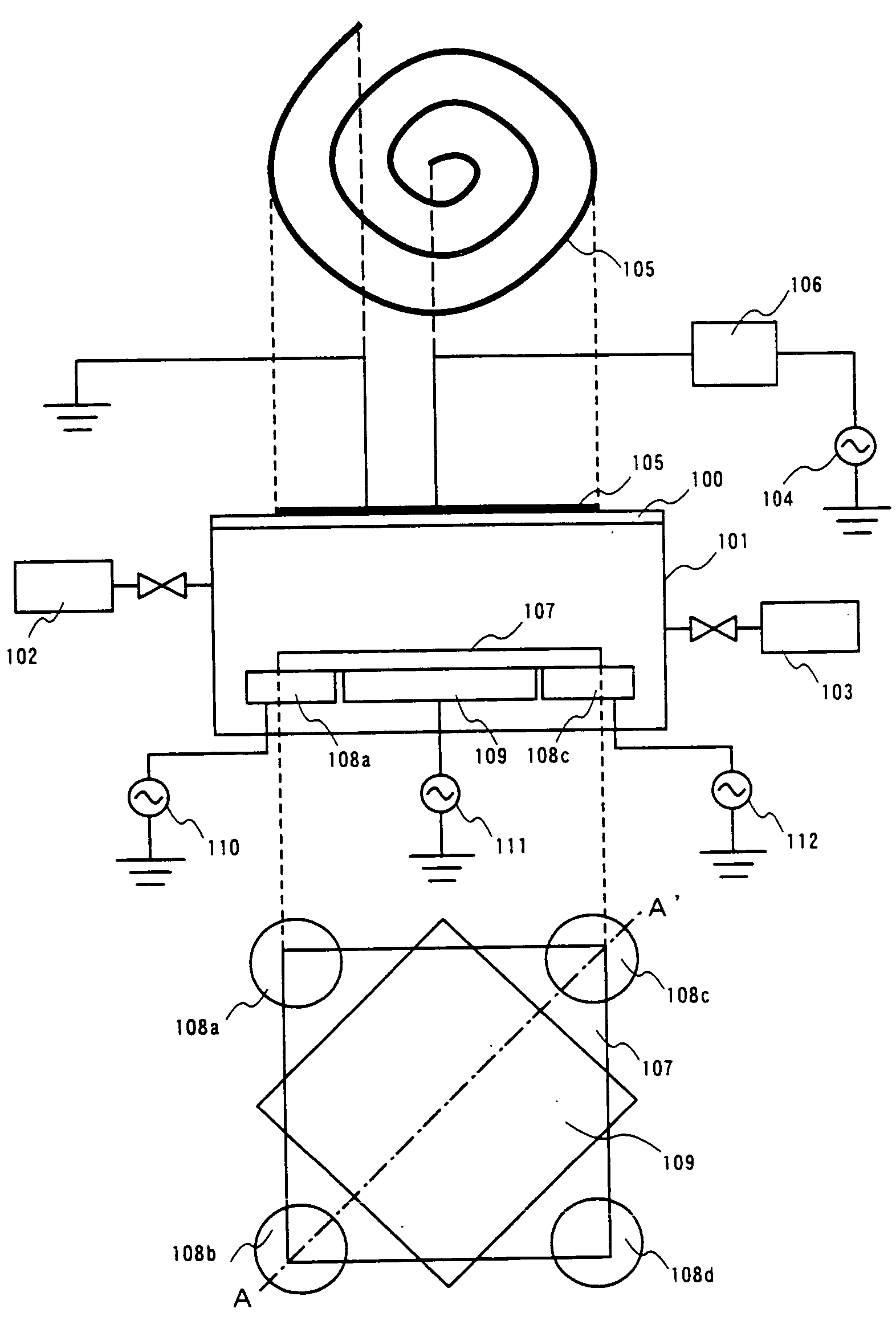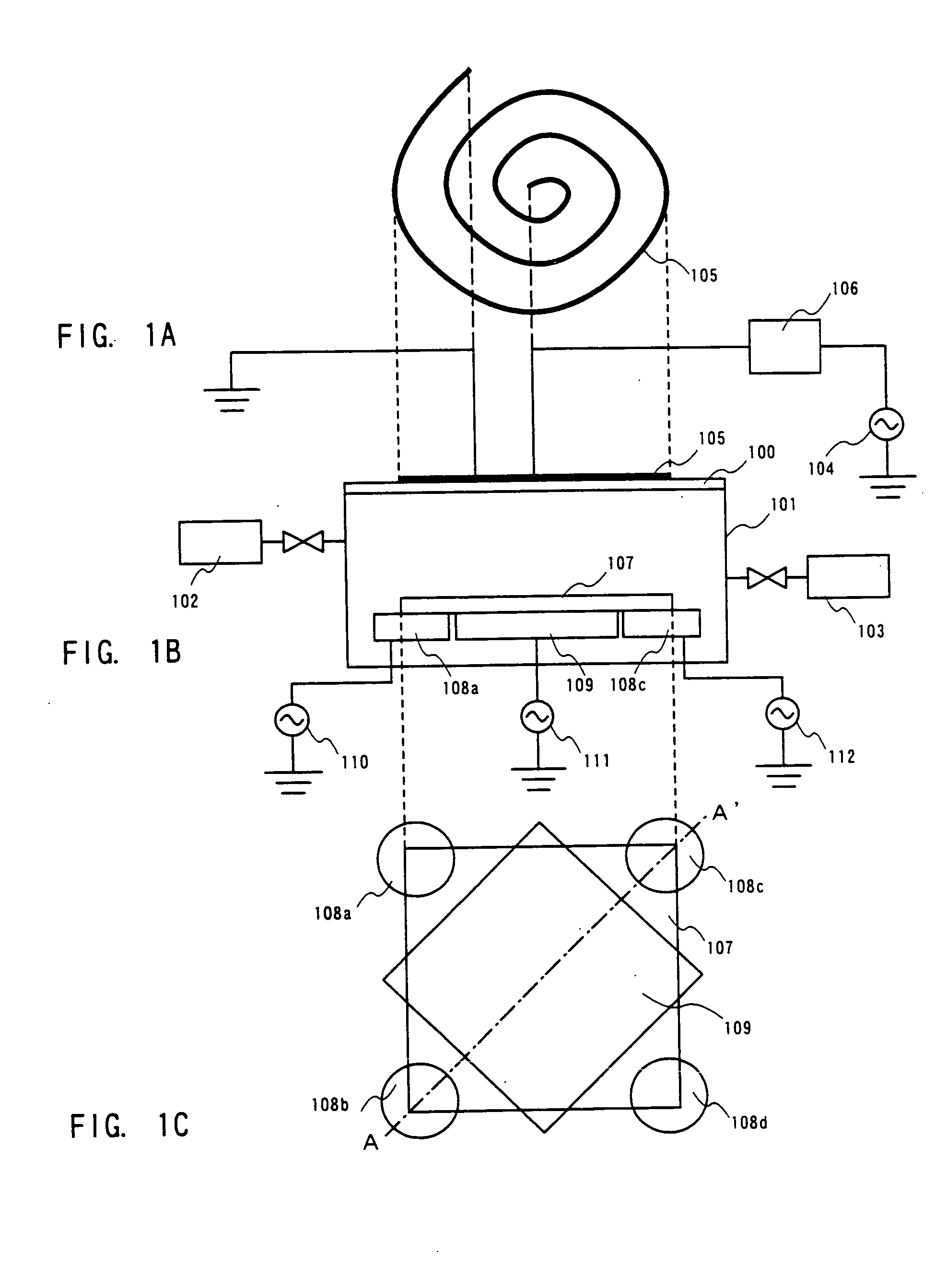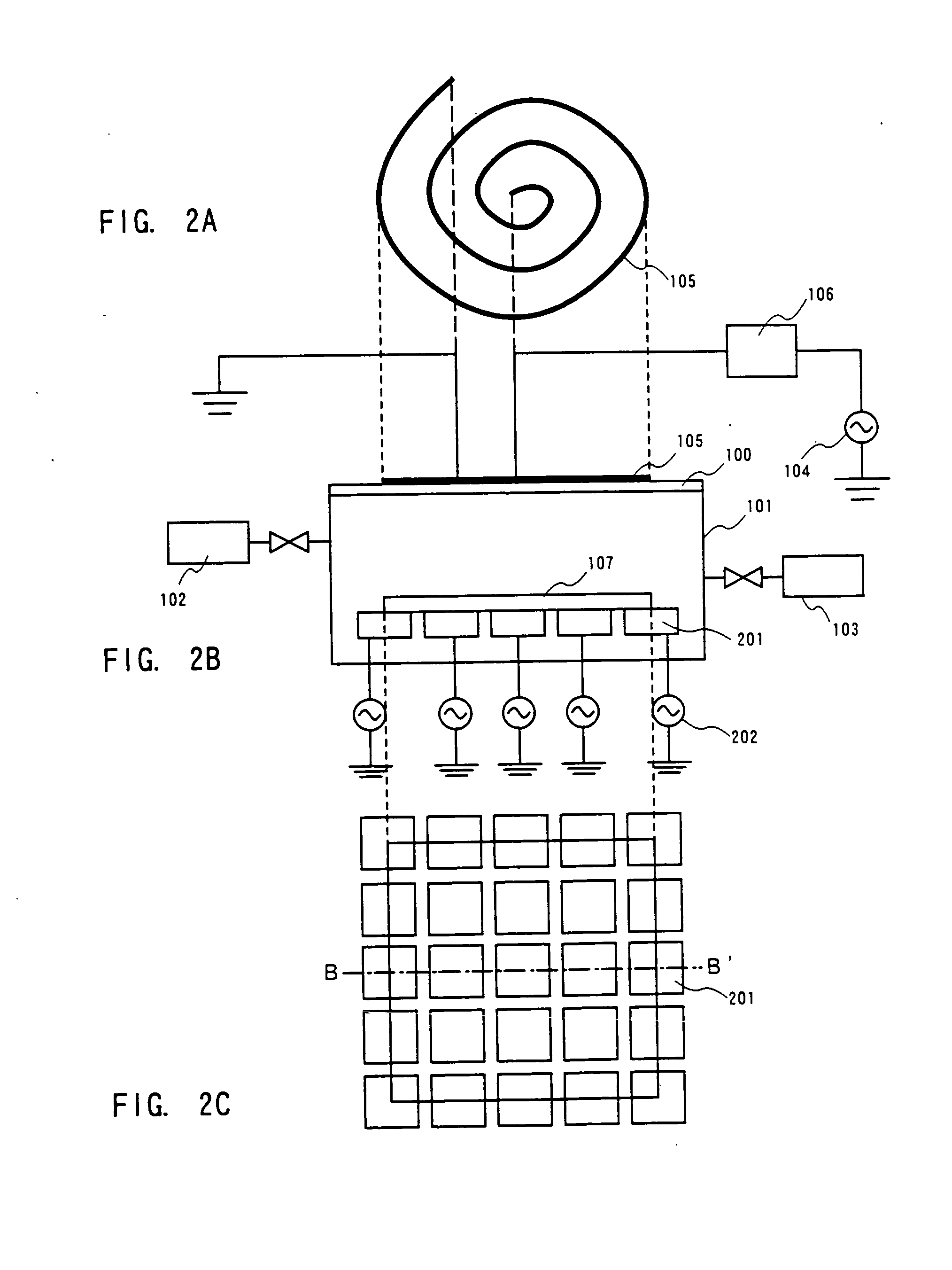Dry etching apparatus, etching method, and method of forming a wiring
a technology of etching apparatus and wiring, applied in the direction of identification means, instruments, transistors, etc., can solve the problems of non-uniformity of substantial electric power applied to the entire surface of a substrate, etching defects, and enhancement of productivity, so as to enhance the uniformity of rectangular substrates in the plan
- Summary
- Abstract
- Description
- Claims
- Application Information
AI Technical Summary
Benefits of technology
Problems solved by technology
Method used
Image
Examples
embodiment mode 1
[0059] In Embodiment Mode 1, the present invention is applied to an etching apparatus using inductively coupled plasma, i.e., an ICP type etching apparatus.
[0060]FIGS. 1A to 1C show a structure of an ICP type etching apparatus. In FIG. 1B, an upper surface of a chamber 101 in the etching apparatus is made of an insulator 100 such as quartz glass, and a first electrode 105 is disposed outside the insulator 100. FIG. 1A is a top view of the first electrode 105 made of a flat coil. According to the present invention, the first electrode 105 is not limited to the shape shown in FIG. 1, and may have any shape. The first electrode 105 is connected to a first high-frequency power source 104 via a matching circuit 106. A high-frequency current flows through the first electrode 105 to form an electromagnetic wave in the chamber 101, and electrons flowing in the electromagnetic field are allowed to bump into neutral particles of a reaction gas to generate plasma. A predetermined reaction gas...
embodiment mode 2
[0069]FIG. 3 shows an example in which the present invention is applied to a parallel-plate type etching apparatus. The parallel-plate type etching apparatus uses capacitive coupling plasma generated by applying a high frequency to electrodes through capacitors.
[0070] Reference numeral 305 denotes a first electrode (upper electrode) that is grounded. A high-frequency electric field is applied between the first electrode 305 and a second electrode to ionize a reaction gas in a chamber 301, and a material film to be etched on a substrate 307 to be treated is etched with ions in the reaction gas. A predetermined reaction gas is introduced into the chamber 301 through a gas supply system 302, and exhausted through a gas exhaust system 303.
[0071] The substrate 307 is placed on a second electrode (lower electrode) composed of a plurality of electrodes 308a to 308d, and 309 via an insulator 300 made of quartz or the like. The electrode 308a disposed below a corner portion of the substrat...
embodiments
Embodiment 1
[0076] In Embodiment 1, an example of a method of manufacturing a liquid crystal display apparatus provided with a pixel portion and a driving circuit on the same substrate will be described with reference to FIGS. 4A to 8.
[0077] In the present embodiment, a substrate 401 made of barium borosilicate glass or aluminoborosilicate glass (e.g., #7059 glass and #1737 glass produced by Corning Glass Corp.) is used. There is no particular limit to a substrate as long as it has light transparency. A quartz substrate may be used. A plastic substrate having heat resistance enduring a treatment temperature in the present embodiment may also be used.
[0078] An underlying insulating film 402 made of an insulating film such as a silicon oxide film, a silicon nitride film, or a silicon oxide nitride film is formed.
[0079] As the underlying insulating film 402, a silicon oxide film, a silicon nitride film, a silicon oxide nitride film (SiOxNy), a stacked film thereof, or the like can ...
PUM
| Property | Measurement | Unit |
|---|---|---|
| area | aaaaa | aaaaa |
| size | aaaaa | aaaaa |
| size | aaaaa | aaaaa |
Abstract
Description
Claims
Application Information
 Login to View More
Login to View More - R&D
- Intellectual Property
- Life Sciences
- Materials
- Tech Scout
- Unparalleled Data Quality
- Higher Quality Content
- 60% Fewer Hallucinations
Browse by: Latest US Patents, China's latest patents, Technical Efficacy Thesaurus, Application Domain, Technology Topic, Popular Technical Reports.
© 2025 PatSnap. All rights reserved.Legal|Privacy policy|Modern Slavery Act Transparency Statement|Sitemap|About US| Contact US: help@patsnap.com



